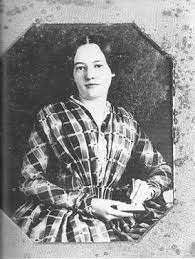I’M JUST CURIOUS: My question for you
 by Debbie Walker
by Debbie Walker
I have a question for you today and I hope you will give it some thought over the coming days. My question is: Do you know what a blessing you are?
It’s a pretty big question and a little uncomfortable and embarrassing for most people. I don’t think it is something we spend much time considering, but I am asking you to today.
If anything, I think most of us tend to compare ourselves to someone we admire for the things they do, how they make us feel about ourselves, things along that line. And if we are comparing ourselves to someone else we fall back on our faults rather than our positive attributes.
Take just a minute and think of three positive things about your best friend. OK, how did you do with that assignment?
Now I want you to do another one. Think of three negative things about yourself. How did you do?
Okay, now think of three positive things about yourself. How long did it take you? Was it easier to think of positive things or negative things? Why do you suppose the positive things about yourself were so difficult? And yet you can do the positive things for someone else rather quickly. I’ll tell you a secret – you could have cheated. All you had to do is think of positive things people have told you about yourself.
I feel part of the reason we have a hard time with the positives is because most or all of us have been taught “not to brag” about ourselves. Possibly as a child maybe praise wasn’t quite as quick as a reprimand may have been. And if you do something right you will just about forget it but if you do something incorrect you will relive that moment over and over again.
Okay, so now, again. Do you know what a blessing you are? In what ways might you think of yourself as being a blessing to the rest of the world? Anyone want to share?
When you smiled and said “Good Morning” or “afternoon” to someone you were a blessing to them, You ‘noticed them’ and it made them smile and feel good.
Sometimes we just have eye contact with someone in a store or on a sidewalk and we just smile and continue on, you made that person feel better.
When you are in a store, checking out and you smile at the cashier and say something like “Morning, and how are you today?” I promise you will be one of the few people that will do that. It’s such a simple thing to do and yet so many don’t do it. I promise you won’t use up your smile quota for the day. When our Creator invented us I don’t think he gave us a limit on how many we can give out in a day.
And the darndest thing is people will usually give them right back to you so you never get the chance to run out anyway.
Okay, I have reached the last of my words for this column. So keep this week’s paper, and I will finish up next week.
I’m just curious if you will check in next week. Thanks for reading. Anything to share ? Send it to DebbieWalker@townline.org.













 by Laura Corbin, Bureau Chief, Bureau of Tobacco Free Florida
by Laura Corbin, Bureau Chief, Bureau of Tobacco Free Florida




